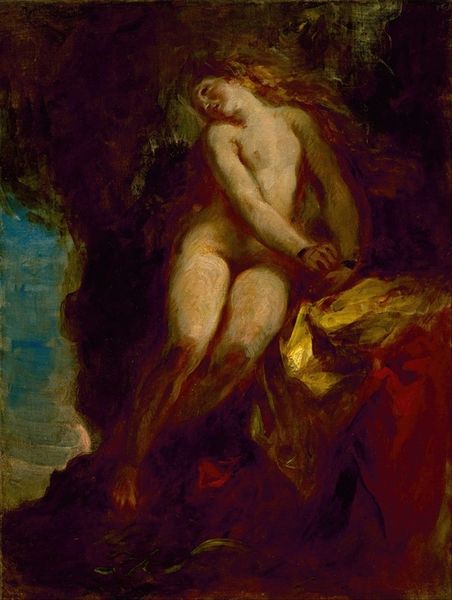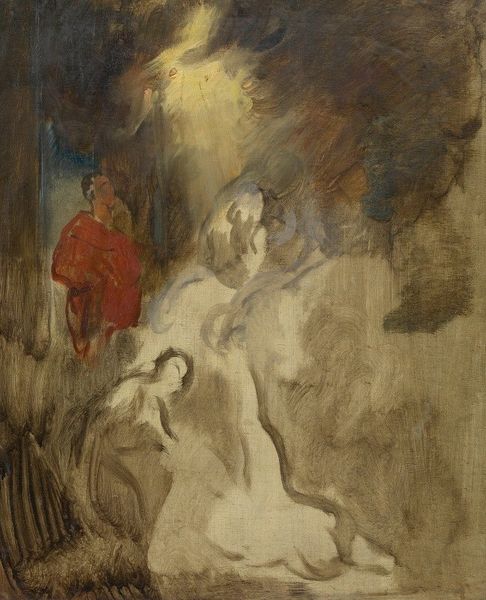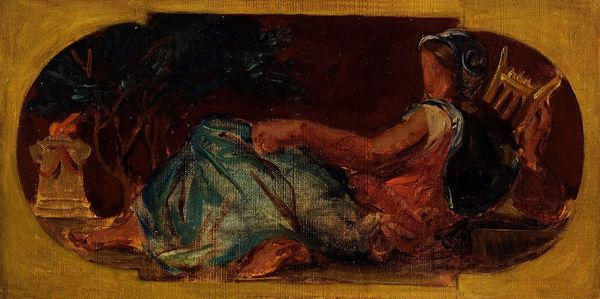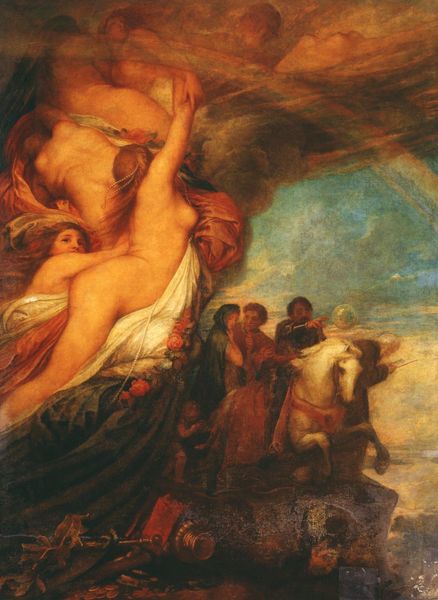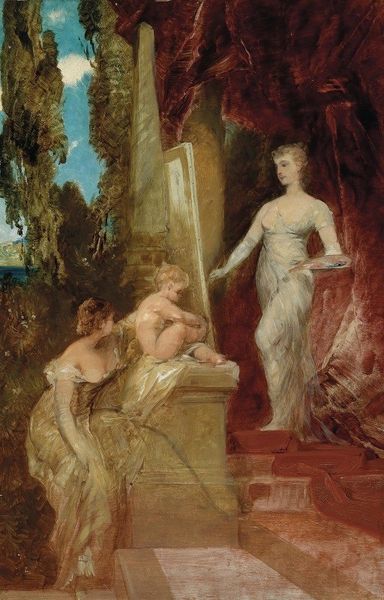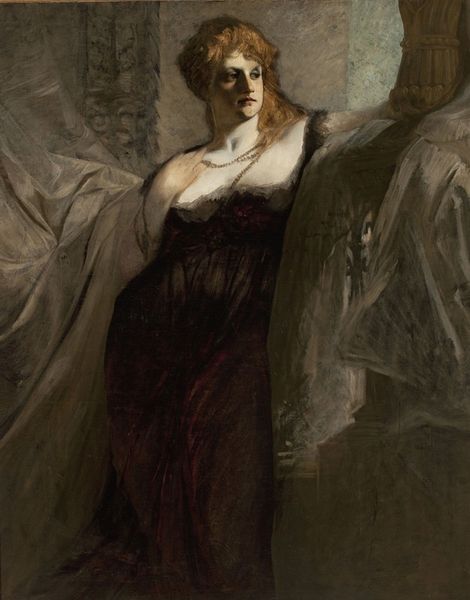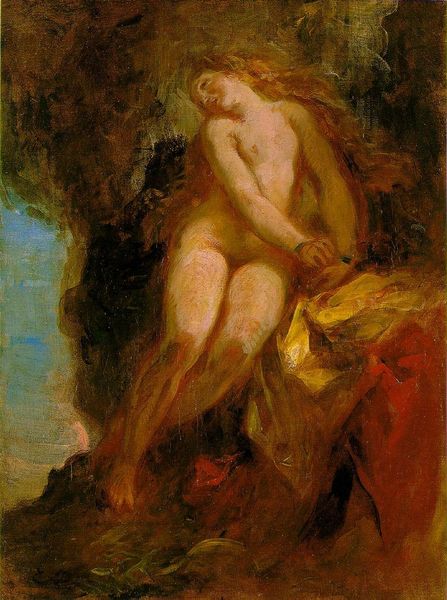
Copyright: Public Domain: Artvee
Hans Canon painted this oil on canvas, Die Muse Clio, during a time of significant cultural and political change in Europe. Canon, who lived in the Austrian Empire, was a part of the late Romanticism movement, a style often characterized by its emotional intensity. Here, Clio, the Greek muse of history, stands amidst classical architectural elements, perhaps reflecting Canon's interest in the past but also a desire to give it renewed meaning. What does it mean to portray a historical muse in this time of nation-building, empire, and shifting social structures? The identity of Clio is important here. As a woman, she's the embodiment of knowledge and inspiration in a male-dominated academic and artistic world. Yet, her portrayal also raises questions about who is writing and shaping history. Whose stories are remembered, and whose are erased? The painting is not just a classical representation; it’s an invitation to reflect on the very act of historical storytelling and its role in shaping our understanding of the world.
Comments
No comments
Be the first to comment and join the conversation on the ultimate creative platform.
